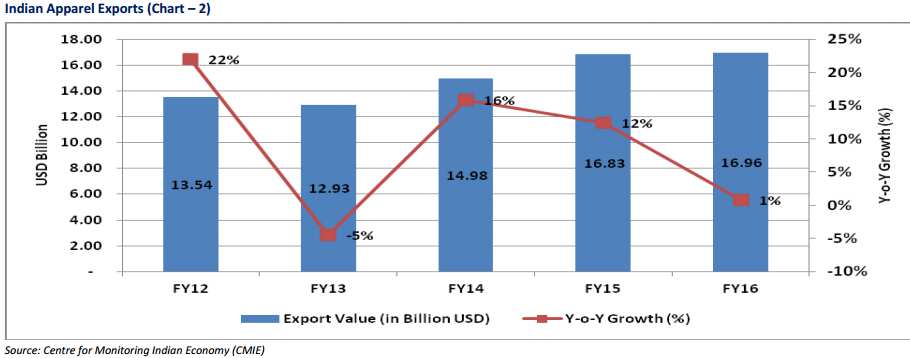Will Trans-Pacific Partnership harm India's textile exports?
Care Ratings said, “Indian apparel exports are partially protected from the adherence to the “Yarn forward” rule i.e. the yarn used in manufacturing textile and apparel goods must be spun or extruded in one of the TPP participating countries for the final goods to qualify for benefits.”

Trans-Pacific Partnership (TPP) is currently the talk of all countries. The partnership is a trade agreement of twelve Pacific Rim countries which will be formed to create a free-trade zone amongst these nations.
India being the sixth largest textile and apparel exporter in the world stands to lose, Care Ratings said, “Indian apparel exports are partially protected from the adherence to the “Yarn forward” rule i.e. the yarn used in manufacturing textile and apparel goods must be spun or extruded in one of the TPP participating countries for the final goods to qualify for benefits.”
It is expected that TPP will execute or reduce duties on textile and apparel goods whichever derived from these 12 countries, provided the specific “Rule of Origin” requirements are met i.e. “Yarn forward” rule; whereas the Indian apparel exports would be entitled to 15-45% duty.
Care Ratings explained, “The passage of TPP may bring India in a disadvantageous position in longer term, against other countries like Vietnam which has gained duty-free access to US. Textile and garments produced from yarn and fabric made by a TPP nation will qualify for duty-free status. ”
Despite the weak global apparel trade, the Indian apparel exports have consistently risen. In the last fiscal (FY16), the country’s apparel export grew by 1% in FY16 as compared with FY15.

Till March 2016, India retail market value was at $40 billion, which was almost entirely produced within the country. If production from both domestic and export markets combined, the country’s value jumps to $57 billion, against with $24 and $20 billion in Bangladesh and Vietnam, respectively.
Care Ratings added, “With increasing competition from Bangladesh and Vietnam along with the passage of TPP, the export demand for Indian apparel is expected to moderate.”
Government intervention is seen as a major reason to stem this probable decline of India's global textile export market.
Various measures have been adapted by government of India like allocating Rs.1,480 crore towards the Amended Technology Upgraded Fund (A-TUF) Scheme incentive and Rs.100 crore under the Scheme for Integrated Textile Parks (SITP).
The rating agency said, “Given the continuous efforts by the Government of India to response the increasing competition from Vietnam and Bangladesh, India is in a sweet spot to increase its market share in world apparel trade given the declining competitiveness of China.”
The government recently announced Rs.6,000 crore package for this sector which involves additional incentives for duty drawback scheme for apparels, flexibility in labor laws and tax and production incentives to garment manufacturing units.
Meanwhile led by lack of sufficient spinning and weaving capacities, would not lead India under the danger position for a large extent, as Care Ratings expects it to force member countries till the time required capacities are built.
Get Latest Business News, Stock Market Updates and Videos; Check your tax outgo through Income Tax Calculator and save money through our Personal Finance coverage. Check Business Breaking News Live on Zee Business Twitter and Facebook. Subscribe on YouTube.
RECOMMENDED STORIES

IPL Auction 2025 Free Live Streaming: When and where to watch Indian Premier League 2025 mega auction live online, on TV, Mobile Apps, and Laptop?

Tamil Nadu Weather Alert: Chennai may receive heavy rains; IMD issues yellow & orange alerts in these districts

SIP vs PPF: How much corpus you can build in 15 years by investing Rs 1.5 lakh per year? Understand through calculations

SBI Senior Citizen Latest FD Rates: What senior citizens can get on Rs 7 lakh, Rs 14 lakh, and Rs 21 lakh investments in Amrit Vrishti, 1-, 3-, and 5-year fixed deposits
03:54 PM IST








 India's technical textile industry exports to cross $10 billion by 2030: Minister
India's technical textile industry exports to cross $10 billion by 2030: Minister Kalahridhaan Trendz bags Rs 115 crore order - Check details
Kalahridhaan Trendz bags Rs 115 crore order - Check details  Govt approves 18 R&D projects of technical textiles
Govt approves 18 R&D projects of technical textiles India likely to present incentives for ailing textile by December -trade body
India likely to present incentives for ailing textile by December -trade body How textile MSMEs in India are creating jobs and employment opportunities, decodes expert
How textile MSMEs in India are creating jobs and employment opportunities, decodes expert